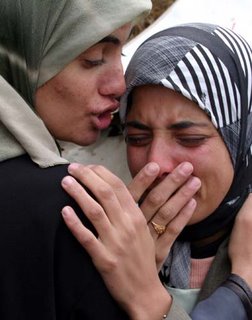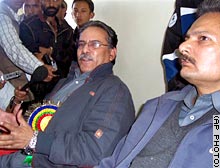 Can this chocolate bar really beat PMT?
Can this chocolate bar really beat PMT?Too good to be true? Chocolate touted as cure for PMT
A new chocolate bar designed to relieve the symptoms of PMT (pre-menstrual tension) means women can indulge their tastebuds without guilt. The Women's Wonder Bar contains rose oil to sooth frayed nerves and is rich in Omega 3 fatty acids, said to reduce stomach cramps and headaches. FEMAIL of Daily Mail, London asked four writers to put it to the test . . .
TRACY SCHAVERIEN, 40, lives in Kingston-upon-Thames, Surrey, with her partner, Jerry, and one yearold son, Paddy.
She says:
Who ever coined the phrase 'period drama' must have been referring to me and my monthly mood swings. Ever since I was a teenager, I've been prey to manic highs and terrible lows in the run-up to that time of the month: I cry, I shout and I slam doors.
The only time my PMT was ever under control was when my doctor prescribed the contraceptive Pill to stabilise my hormones. It worked like a dream.
I was still on the Pill when I met my husband. Cunningly, I kept taking it until after our wedding, by which time he was legally bound to stick with me. When I decided to give my body a break from it, my true colours came shining through. Admirably, his spirit remains unbroken - so far!
I doubt very much that a humble bar of chocolate will make a dent in my monthly madness, even if it is "top quality Swiss chocolate" with an "exclusive blend of soy and chaste tree berry with a subtle taste of rose to help soothe the symptoms of PMS and menopause", as the manufacturer claims.
Surely in a world where I drink alcohol and coffee and breathe in pollution the whole time, a little square of chocolate won't have that much bearing on my hormonal state?
As soon as I bite into the dark, smooth chocolate and let it dissolve on my tongue, I can tell it's good quality stuff. But it has a funny taste, a bit like rose petals. If you're a fan of Turkish Delight, you'll adore it. Unfortunately, it makes me feel a bit queasy, but the slightly unpleasant taste means I am able to treat the chocolate as a medical supplement, to be eaten sparingly once a day.
By the end of the month, I have grown to like the taste of my rosy chocolate, but I've got into the habit of savouring one square every evening. And in the run-up to my period, I'm astonished to find that I do feel a little bit calmer than usual.
Of course, my PMT hasn't been eradicated - after watching a documentary about lions I still cry for a day after the mummy lion dies - but I'm noticeably less tense and snappy.
I'm cautiously impressed with the results so far. But perhaps thinking about my PMT has made me more conscious of what's going on in my head, and therefore able to recognise and control mad episodes before they overwhelm me. Whatever the case, it's good to feel a festive spring my step.
ERIN KELLY, a writer, is 30 and lives in North London with her husband, Mike, an actor.
She says:
I have never really considered myself to be a victim of my hormones. OK, so there are a few tell-tale signs when that time of the month is approaching; a little less patience than usual with my loved ones, my computer and, in particular, with bad drivers.
But I'm not the sort of woman whose premenstrual moods make my partner fear for the safety of his private parts. Neither am I the kind of girl who passes up an excuse to eat chocolate. Not just any old chocolate, but healthy chocolate. Every day. In the name of research.
The Wonder Bar is packed with virtuous-sounding ingredients: chaste tree berries, soy, flaxseed. It even contains 'healthy fat' and four times as many antioxidants as green tea. And it's organic.
The manufacturers don't specify how much, or how often, we should eat to reap maximum benefit from the wonder bar, so I prescribed myself one or two squares a day, which I started around midcycle.
For a healthy chocolate, the bar tastes surprisingly decadent. The rich and slightly bitter dark chocolate, infused with essential rose oil, creates a cocoa-cum-Turkish Delight flavour.
The chocolate is also rich and intense, so I didn't feel the need to devour a whole bar at a time.
To be honest, I wasn't expecting the wonder bar to be anything more than a gimmick, a guilt-free excuse to satisfy those pre-menstrual chocolate cravings which, according to the manufacturers, we can blame on natural feel-good chemicals in chocolate.
But a couple of weeks into my experiment something odd happened. My period arrived. Without any warning. No fights with my PC, no horn-blasting at traffic lights.
Admittedly, I suffer from the very mildest symptoms of PMS, and perhaps it was just a happy coincidence that I didn't notice any this month. Or maybe the makers of the Wonder Bar are on to something.
Like any health supplement, its benefits are debatable. But it tastes nice and does no harm, so it must be worth a try.
TESS STIMSON, 38, is a British-born writer and author. She lives in Florida with her husband and three children aged 12, nine and four.
She says:
I don't suffer from PMT and - at certain times of the month - I'll kill anyone who says otherwise. But roughly once every four weeks, my husband goes out of his way to irritate me. He'll suggest we go out to see a movie, which obviously means he thinks I'm fat (why else would he want to take me somewhere dark?) Or he'll buy me flowers, which means he's got something to hide. Or offer to wash up, which means he thinks I'm fat and he's got something to hide.
At times like these, it's only natural for a girl to turn to chocolate. And I do, in industrial quantities. For five days a month, I eat enough Cadbury's Dairy Milk to supply a small country (or, indeed, build one). It doesn't have any noticeable effect on my temper, but it makes me feel better.
So when I'm asked to test a new Swiss chocolate bar that promises to 'take sweet revenge' on PMT as well as being good for you, I'm very keen to know more (although not nearly as keen as my husband).
I'm slightly put off by the fact it describes itself as "an exclusive blend of soy and chaste tree berry with a subtle taste of rose". Chocolate is supposed to be sinful, not chaste. But it is organic, and packed with fibre - as much as an apple - as well as being low-glycaemic, the diet Holy Grail du jour.
It smells of rosewater. And it's dark chocolate, which I hate. I know it's good for me, with its solid cocoa and anti-oxidants. But I don't eat chocolate because it's good for me. I eat it because it makes me feel good. The Wonder Bar doesn't. It leaves an unpleasant aftertaste which even a strong coffee doesn't kill.
Nor do I notice any improvement in my temper: my husband is just as irritating the week before my period as he always was. I still radiate enough heat to solve the world's energy crisis and burst into tears at the sheer poignancy of Desperate Housewives.
Nonetheless, I continue to eat the recommended 2oz per day. In the interests of scientific study,
I have even eliminated all other chocolate from my diet, and asked my husband, as an independent observer, to monitor my moods.
His response is unequivocal. Three weeks into the trial, I come home to find the Wonder Bar in the bin, and four family-sized bars of Cadbury's Dairy Milk on my desk.
CLAUDIA CONNELL, 40, is single and lives in South-West London.
She says:
For years, I always thought that I didn't suffer with PMT because none of the people who knew me well ever mentioned a drastic change in my personality.
As it turns out, I had the all-time worst PMT in history and no one dared say anything in case I killed them or burned down their house. The rage starts to build about five days before the big day and stays with me for the next four days.
In other words, I am a vile, spiteful, bitchy nightmare for two weeks out of four. No wonder I'm single! Like all women, I crave chocolate at certain times of the month, so the idea of a bar that satisfies my cravings while, at the same time, helps calm my psychotic tendencies is enormously appealing.
The Women's Wonder Bar was formulated by a U.S. doctor called Philip Cohen, who either wanted to do all he could to help womankind in her days of need, or had a wife that suffered the world's worst PMT and had to invent a cure or get a divorce.
As well as claiming to reduce premenstrual symptoms, the chocolate bar also says it aids sleep, promotes a glowing skin and boosts brain power. It really would be a 'wonder' bar if it did all that.
I started by eating three bars of chocolate a week before my period was due. Even though plain chocolate would never be a first choice, I had to admit the Women's Wonder Bar was incredibly tasty.
However, its sickly sweet smell reminded me of a granny's bedroom - with a hint of parma violets and rose perfume - and it is all packaged in a ridiculously girly pink wrapper, the logic clearly being: "OK, she might be a bitter, miserable hag, but she still likes pretty things."
But once you get beyond the off-putting smell and sample it, the chocolate tastes surprisingly good. As the days ticked by I built up to a greedy two-bar-a-day habit, and as the dreaded day dawned I felt so much livelier and less bloated than normal. I even escaped the skin break-out that usually makes the big occasion for me. Could the Wonder Bar really have worked?
The test came later on when someone stole my parking space in the supermarket car park - I only tooted my horn and made a rude gesture, rather than get out of my car for a screaming face-to-face confrontation, as I would otherwise have done.
Friends normally shun my company at a certain time of the month, but on this occasion I conned a girlfriend into having dinner with me and she remarked that I seemed: 'vaguely normal', which I took as a massive compliment.
I wouldn't say the Wonder Bar turned me from Cruella De Vil into Pollyanna, but it seemed to make a marked difference and I will be tucking in at the same time next month - I always knew chocolate was the answer to all my problems.
• To get the Women's Wonder Bar by Eccobella, log on to: www.healthbychocolate.com











 Female academic claims Muslim veils originally worn by prostitutes
Female academic claims Muslim veils originally worn by prostitutes